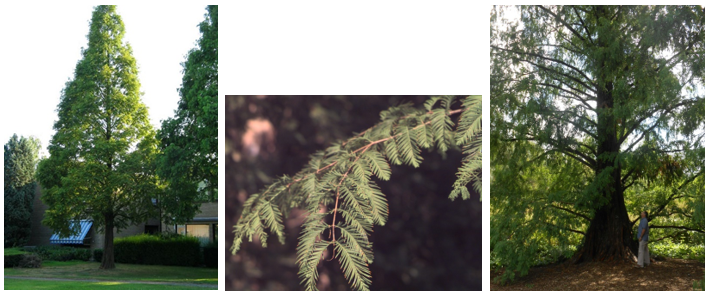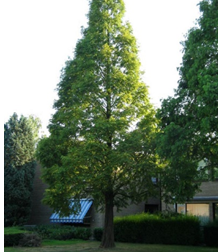A Cadillac that Grows like a Weed
This is how I’ve often described another of my favorite plants, dawn redwood. Many of our better ornamentals are slow-growing, which actually makes them stronger trees in the long run. Typically, fast growing means weak wood and fast dying. But the dawn redwood seems to shoot up quickly and is still a strong, shapely tree. Metasequoia glyptostroboides (we might stick with the common name on this one) is a deciduous conifer related to the giant coastal redwoods of California. It grows rather upright with a pointed top, like a Christmas tree, but turns a bronze fall color and drops its leaves in winter. It loves our central Ohio heavy wet soil. In fact, I tested this by planting one in a shallow-water wetland and it’s thriving! It is also related to our native “bald cypress” which grows in the swamps of Florida and Louisiana.
The history of dawn redwood is interesting. It was long thought to be extinct with evidence of its existence found only in fossil records in China. Then in 1944 a grove of trees was found in China. Today, all the dawn redwood trees in the world have been propagated from those original trees!
I’ve planted dawn redwood and bald cypress together for comparison and I actually prefer the dawn redwood. It’s “fernlike” leaves are larger, the branching is coarser and cleaner (less twiggy branches) and it’s taller and more vigorous. Dawn redwood also lacks the “knees” which sprout up around the bald cypress and can become a problem for mowing. This is a wonderful ornamental tree for a large lawn as it gets rather big. It can also be used for screening and windbreaks. Don’t be discouraged by the dropping of leaves in winter. They are so fine that they are not messy and form a fine mulch like pine needles. The deciduous quality also allows the winter sun to penetrate. It is thought that the deciduous feature on normally evergreen conifers was caused through geologic history by this being a high latitude species and the lack of winter sun! Deciduous trees can still be effective windbreaks as their structure will still filter and slow down the wind.
I often hear, “I need a fast-growing tree to enjoy it in my lifetime”. Normally I discourage planting fast growers but in this case, “go for it”!



Comments are closed.